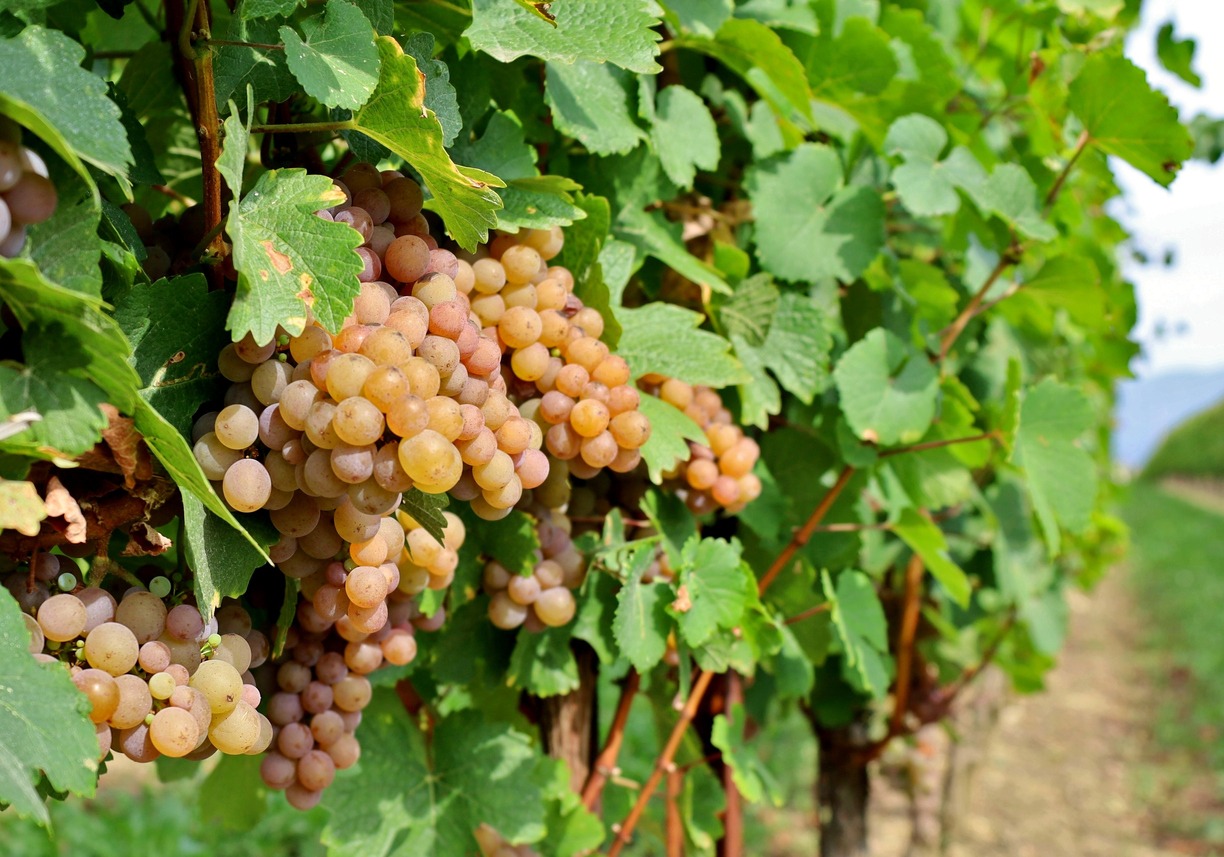Pinot Grigio and Pinot Gris wines originate from the same grape variety, yet they represent two distinct styles that have confused many wine enthusiasts and casual drinkers alike. The difference in naming primarily reflects the two diverse winemaking approaches that have evolved in Italy and France, respectively. Pinot Grigio, the Italian version, is typically lighter-bodied with bright acidity, exhibiting crisp and fresh flavor profiles with floral, and at times, spicy notes.
In contrast, the French-style Pinot Gris, particularly from the Alsace region, often presents as a more full-bodied wine with a richer, almost honeyed complexity and a spicier palate. Although the grape is genetically identical in both cases, the resulting wines are crafted to suit different regional tastes, which is further influenced by factors such as climate, soil, and winemaking traditions. These elements combine to create wines that, while related, offer distinct experiences to the consumer, hence the importance of understanding the nuances between the two styles.
Historical Background and Origin
The distinction between Pinot Gris and Pinot Grigio reflects their historical roots and the global journey of a single grape variety. This section unveils the origins in the Old World and traces their cultivation to new territories.
Origin in France and Italy

France is heralded as the birthplace of the Pinot Gris grape, with its presence in the Burgundy region dating back centuries. It is identified as a mutation of the Pinot Noir grape, which acquired a recognizable grayish-blue fruit, hence the name ‘gris,’ French for ‘gray.’ The grape found a particularly notable home in the Alsace region, where it is known to produce rich and full-bodied white wines.
In contrast, Italy embraced this grape with avidity, particularly in areas like Veneto and Friuli-Venezia Giulia. The Italians named it Pinot Grigio and leveraged their cool climate to produce a lighter, crisper style of wine that has gained international recognition, distinguishing itself from the typically fuller-bodied French style.
Global Cultivation: U.S, Germany, and Beyond
The grape’s versatility and adaptability have allowed it to flourish outside of France and Italy. Oregon in the U.S.has developed a reputation for Pinot Gris that closely mirrors the Alsatian style, benefitting from a similar cool climate. California, too, has adopted the variety, producing wines with a more fruit-forward character.
The white wine grape made significant inroads into Germany, Austria, and Switzerland, where it is often referred to as Grauburgunder or Ruländer, each bringing their unique style to the wine. New Zealand has established itself as another New World producer, creating Pinot Gris with notable aromatic intensity. Each region imparts its own terroir to the grape, resulting in a spectrum of styles that speak to the grape’s global appeal.
Viticulture and Vinification
In the realm of viticulture and vinification, the production of Pinot Grigio and Pinot Gris involves a nuanced interplay between grape variety characteristics and specific winemaking techniques that give each wine its distinct profile.
Grape Variety and Mutation
Pinot Grigio and Pinot Gris are wines made from the same grape variety. This grape is thought to be a mutation of the Pinot Noir variety, with a distinctive greyish-blue fruit, alluding to its name where ‘gris’ and ‘grigio’ translate to ‘grey’ in French and Italian, respectively. The mutation has given rise to a grape that thrives in different climates and terroirs, contributing to the diverse expressions of the wine. Pinot Noir is among the most difficult grape variety to grow, making it expensive. Read our article, What Makes Pinot Noir Pricier Than Other Varieties of Wine? to learn more about it.
Winemaking Techniques
Winemaking techniques for these wines vary significantly between regions and producers. Pinot Grigio, commonly associated with the Italian style, is frequently harvested early to retain the grape’s natural acidity, resulting in a lighter-bodied wine. Such wines often exhibit crisp and fresh characteristics, with vibrant stone fruit flavors and floral aromas.
In contrast, Pinot Gris, especially from regions like Alsace, may undergo vendanges tardives (late harvest), whereby the grapes are picked later in the season. This can concentrate the sugars and flavors, potentially leading to a fuller-bodied wine that may even develop noble rot, or botrytis, adding complexity and sweetness. Due to the later harvesting and different fermentation methods, Pinot Gris typically exhibits richer, spicier notes compared to the zesty profile of Pinot Grigio.
Taste Profile and Characteristics
Pinot Grigio and Pinot Gris are distinguished by their unique taste profiles, which vary significantly in flavor, aroma, and texture.
Flavor and Aroma Notes
Pinot Grigio typically presents a lighter, crisp profile with bright acidity that contributes to its refreshing quality. It often carries flavors of citrus, like lemon and lime, and may exhibit green apple and pear notes. The aromas are similarly zesty with a hint of minerality.
Flavor Highlights:
- Citrus flavor: Lemon, Lime
- Fruit flavors: Green Apple, Pear
- Aroma: Citrus, Minerality
Pinot Gris, in contrast, is known for a richer array of flavors and a fuller body. It may express a sweeter profile, featuring ripe fruit flavors like peach and melon, accompanied by floral aromas. The presence of spice adds complexity to the rich texture of this wine.
Flavor Highlights:
- Fruit flavors: Peach, Melon
- Aroma: Floral, Spice
- Taste: Slightly sweeter, Richer
Texture and Body Comparison
The texture and body of these wines are as different as their flavors. Pinot Grigio is recognized for its lighter body and sharp texture, which makes it appear more vibrant on the palate.
- Body: Lighter
- Texture: Crisp, Sharp
Alternatively, Pinot Gris exhibits a full-bodied nature with a rich texture, often leading to a more substantial feel in the mouth. This is partially due to its typically lower acidity and sometimes higher alcohol content compared to Pinot Grigio.
- Body: Full-bodied
- Texture: Rich, Substantial
Regional Styles and Qualities

Pinot Gris and Pinot Grigio wines exhibit distinct characteristics that are deeply influenced by the region where the grapes are grown and the wine-making traditions of that area.
France versus Italy
French Pinot Gris typically hails from the Alsace region, known for its rich and opulent wines. Here, the French style tends to deliver greater depth and intensity, often with a fuller body and a rich texture. The terroir of Alsace allows for a more robust expression of the grape, resulting in wines that can showcase complex flavors and a certain sweetness.
Key Qualities of French Pinot Gris:
- Full-bodied
- Sweet notes such as honey and ginger
- Low to medium acidity
- High alcohol content
Conversely, Italian Pinot Grigio is typically lighter in style. The Italian approach focuses on producing wines that are crisp, vibrant, and refreshing. The lean Italian version is characterized by its medium to high acidity and flavors that lean toward citrus and stone fruits.
Key Qualities of Italian Pinot Grigio:
- Light to medium-bodied
- Dry with medium-high acidity
- Fresh citrus flavors with notes like apple and pear
New World Interpretations
New World regions, including the United States, have developed their own styles of Pinot Grigio and Pinot Gris. American Pinot Grigio often attempts to mimic the light and refreshing profile of the Italian style. These wines are generally well received for their straightforwardness and drinkability, catering to tastes that prefer a crisper, cleaner wine.
Typical Characteristics of American Pinot Grigio:
- Medium acidity and alcohol levels
- Fruit-forward with citrus and apple notes
In the New World, one might also encounter a richer style that nods to the French Pinot Gris. These wines can carry more weight and offer a perception of sweetness, giving them a different dimension of enjoyability. The variety of microclimates and techniques used can often lead to a broad spectrum of quality and expressions in these regions.
Signatures of New World Pinot Gris:
- Medium to full-bodied
- Sweeter profile with tropical aromas
- Varied levels of acidity and alcohol content, depending on production techniques
The diversity in regional styles underscores the influence of terroir and winemaking philosophies in shaping the qualities of Pinot Gris and Pinot Grigio.
Food Pairing and Serving Suggestions
When pairing Pinot Gris or Pinot Grigio with food, one should consider the wine’s acidity and aroma profile. These wines complement a wide range of dishes due to their versatile flavor palate, enhancing the dining experience when served at the ideal temperature and with the appropriate glassware.
Ideal Food Combinations
Pinot Gris and Pinot Grigio both offer a range of food pairing possibilities. Due to their typically good acidity and citrus notes, they match well with:
Seafood and Fish:
- Shellfish like shrimp and scallops
- Light fish such as tilapia or cod
Meat:
- Mild chicken dishes
- Pork loin with fruit glazes
Vegetables and Salads:
- Salads with citrus or vinaigrette dressings
- Lightly seasoned roasted or grilled vegetables
Ethnic Cuisines:
- Spicy dishes from Thai or Indian cuisines, especially those with coconut milk or cream sauces
The wines’ crispness cuts through the richness of cream sauces and complements the heat and aromatic spices found in many Asian dishes, providing a refreshing balance.
Serving Temperature and Glassware
For optimal enjoyment, Pinot Gris and Pinot Grigio should be served chilled. The recommended serving temperatures are:
- Pinot Gris: 8-12°C (46-54°F)
- Pinot Grigio: 10-13°C (50-55°F)
Using the correct glassware can also greatly enhance the wine’s characteristics:
White Wine Glasses: Typically have a smaller bowl than red wine glasses, which helps maintain a cooler temperature and concentrate the wine’s delicate aromas.
Conclusion
While Pinot Grigio and Pinot Gris may originate from the same grape variety, their names reflect more than just regional differences. They symbolize distinct winemaking styles, flavor profiles, and cultural approaches to wine. Pinot Grigio, with its Italian roots, typically offers a lighter, crisper, and more refreshing experience, often with a lean towards acidity and mineral undertones. This style complements warm climates and casual, Mediterranean-inspired cuisine, making it a favorite for summer gatherings and light fare. Its straightforward, approachable character has contributed significantly to its popularity in various parts of the world, particularly in the United States.
On the other hand, Pinot Gris, especially from regions like Alsace, presents a richer, more complex profile, often with a greater body and potential for aging. Its nuanced flavors, ranging from sweetly fruity to richly honeyed, cater to a more diverse range of food pairings and reflect a deeper, more contemplative aspect of wine enjoyment. The preference for one over the other is not just a matter of taste, but a reflection of the occasion, cuisine, and individual palate. Whether a wine enthusiast chooses the crispness of Pinot Grigio or the depth of Pinot Gris, they are embracing a wine that has evolved through centuries of cultivation and cultural influence, offering a delightful journey into the world of wine.
